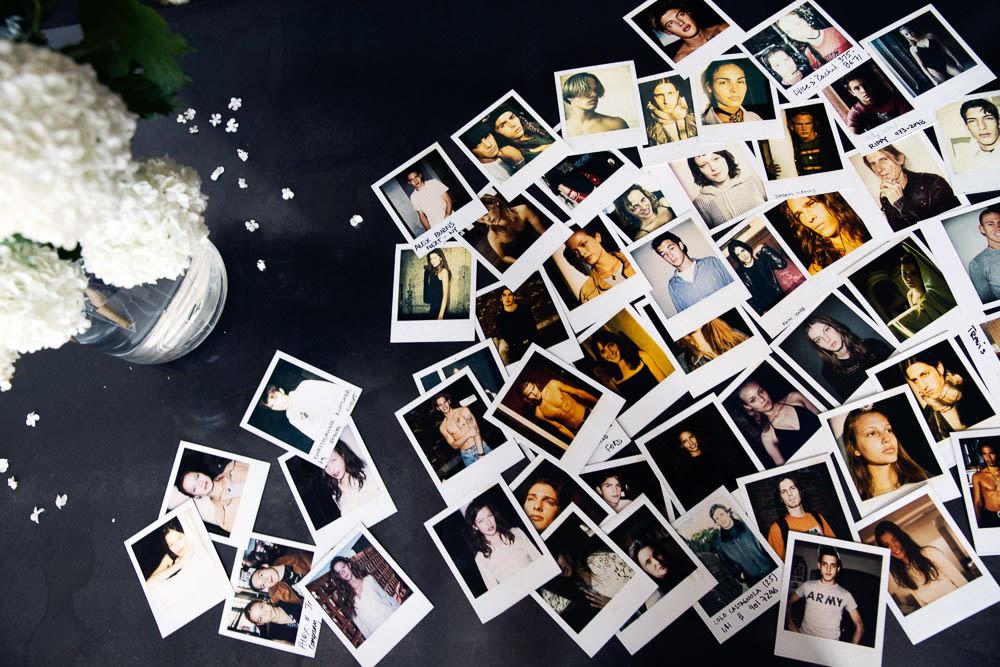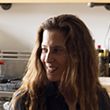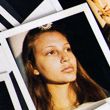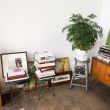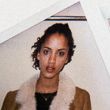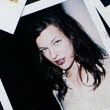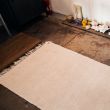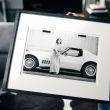'I moved around so much in my life from an early age that, when I needed to adjust, I would rely on talking to people. I like to know how they live their lives. In Miami, we moved to a place called Turnberry Isle…It was the ‘80s, and Turnberry Isle was sort of like Lifestyles of the Rich and Famous—this country club where all the famous tennis players lived—lots of craziness went on. I would talk to everyone, and I met the casting person and location person for Miami Vice. I ended up being an extra on Miami Vice a couple of times, and a stand-in. I guess that was maybe the first time I was exposed to that sort of thing.
Bruce [Weber] was coming down to Miami to shoot the Calvin Klein Obsession and Jeans campaigns, and they needed beautiful, private homes because everyone was naked for Obsession. Barbara [Bruce Weber’s sister] had heard from a family friend that I was living there—I was 16 or 17, still in high school. She called me and said, 'I’m coming down with a photoshoot, would you help us find locations? We know you know Miami.' I totally followed photography and loved Bruce’s work. I sort of covered the phone and screamed, and then was like, 'Yes! I would love to do that.' They asked me to stay on as a production assistant for the Calvin Klein job. I’d always been interested in photography, but my interest was more in people—I think I wanted to be more of a photojournalist. Well, then I met Bruce Weber, and it was reality-versus-fantasy, and I ended up walking into this beautiful world that he created.
When I graduated college, I ended up working for Bruce again, but I’m so glad I went to college. If I could have stayed in college for six years, I would have. College was my favorite thing, and I would tell everyone—and I do tell everyone—to go to college first, and then start modeling. When I finished, I got a phone call to come work with Bruce Weber and his partner/agent Nan Bush at the loft in New York. I thought I would be doing production stuff like I did when I was working for him before, but instead I was filing things. Bruce loves what he does so much. He just shoots and shoots and shoots…he has so many images that the ones you’ve seen are a small proportion of all the pictures he takes. I was archiving the images and keeping track of what went out for magazines and charity events—it was a lot, but I did want to assist him. I did want to be a photographer. And eventually, I started doing his casting as well.
The casting element of the work was just super huge. It sort of took over. I’d go to Argentina, England, and all around America to college campuses to find people because, at that time, Bruce loved new models. That was his thing. So if Versace was wanting to do a shoot in Argentina, they’d send me a month or six weeks ahead of time to find the cast. Now that I look back—I was 22 years old, alone with a Polaroid camera and a suitcase full of film—dream job!
Travel is actually the best part of this job—you allow yourself to be free and go on a journey when you really don’t in day-to-day life, right? It’s so structured. You find the most incredible people when you allow yourself to go on this journey. You have the ability to change someone’s life. It’s kind of scary and kind of nice. There are a lot of things we need to change about the fashion industry, and we know what they are, for sure. Those are all the things that we’re dealing with and that we need to continue to deal with. The good thing is that a lot of people are given opportunities they wouldn’t otherwise be given.
I would go up to anyone I found interesting, take their picture, and have a conversation with them—listen to their story. Bruce was very much about that—very much about their story. A lot of photographers aren’t—they don’t want to know the backstory about you. But because he captures who the person is, he wants to know all about them, so it was kind of perfect for me. When I was scouting for Versace, I went to this one boxing gym in London and it, like, stunk horribly. I saw these two guys boxing. They had the most incredible noses that had been broken so many times. I went up to them—I think there was a bit of an advantage to being a young girl—and said, 'Hi, I’m casting a Versace campaign for Bruce Weber, can I take your picture?' and, literally, they were like, 'What is casting? Who’s Bruce Weber? Who’s Versace?'
Let me just say that working for Bruce was an education like you can’t imagine. He would be like, 'We’re going to do a Pasolini story,' and I’d be like, 'I don’t even know who Pasolini is.' He’s a very famous Italian director, so I would try and rent Pasolini films because we were doing a story for L’Uomo Vogue that had to look like a Pasolini film. Or Bruce would put down a film on Chet Baker, so I’d listen to Chet Baker all the time. He was madly in love with Elizabeth Taylor, so I watched every Elizabeth Taylor film there was, too. Because he referenced so many films and music in his images, I had to quickly learn about all of these directors, and it was an amazing education.
I’ve always tried to understand who my client is. Who am I casting for? What is the brand? As much as I’m being hired for my aesthetic, I’m being hired for my aesthetic to fit within the brand. Sometimes you want to lead them in a different direction and give them advice, but I think it’s important to be versatile. Bruce Weber’s aesthetic and Steven Meisel’s aesthetic were very different. You have to do your research and you have to understand who you’re working for—but also know that they are hiring you for your opinion and your aesthetic.
The Pirelli Calendar was the first calendar I worked on, and it was my introduction to working with Mr. Avedon. The concept is that the tire company puts out a high-end art calendar. They choose a photographer or artist every year and say, 'You can do whatever you want with this project.' Basically they said to me, 'We’d like you to travel around the world. Pick 12 countries that you would like to go to, and find the most beautiful women in every country.' I feel like I was just really blessed and fortunate to go from one place to another, and I loved working with Dick. I say ‘Dick’ because the funniest thing was that I worked with him on that job and then on a few other jobs—and, I mean, this is Richard Avedon, right? First of all, he was much older than me, but he was so adorable—like, amazing grayish-white hair, looked amazing in jeans, super adorable. A small man, but he was larger than life, and here he is saying to me, 'Jennifer, stop calling me Richard Avedon. Call me Dick.' I’d be like, 'I just can’t do that, Mr. Avedon!' [Laughs] That was an incredible time. Nicoletta Santoro styled that first calendar. And for that calendar, there was nudity on one side and clothing on the other.
Bruce kindly introduced me to Calvin Klein at a party in Miami. Calvin was designing then, and he had a really definite opinion of how he saw things. He would say, 'I’m looking for somebody who has the charm of Christopher Atkins in The Blue Lagoon,' and I’d go out and find him. I worked on many different Calvin Klein jobs after that, I worked with Steven Meisel a bit, and the ball never stopped rolling. I was really lucky, but it took a lot of work. I never stopped working because I loved it. I must have been the most annoying person to be around—I was constantly scanning a room. At some point I was like, 'OK, I need to be more present in my life and be with the person I’m sitting across from and have a conversation,' because you’re always casting—you can always be casting.
Now there are so many modeling agencies that spend so much money on scouting in New York and all around the world. At that time, it was different. These days, I’m in New York City more, in Brooklyn, and specifically in Williamsburg. I’m in front of a computer more, too. People send me videos from all over the world, instead of me going all over the world. It’s just different. Then, you needed months to cast a job. You needed FedEx and Polaroids, and now it’s just like digital and video and FaceTime and a job can be cast in two days. Almost more than half of the jobs I get asked to cast, they’re asking what a model’s Instagram following is, and I’m casting based on—but not solely—their Instagram following. It’s sort of crazy that in 2015 an Instagram following has become a standard of beauty. So the game has changed. Instagram is definitely a game-changer, and I think that you have to get on board with it. I want there to be a backlash, but I don’t think it will happen because I think it’s a tremendous opportunity to cross-brand. I think the one good thing that comes out of it is that it’s teaching people and models today that they have to develop a sense of self and a unique point of view, whereas maybe that wasn’t super-important in the past. Personality is very important. And I knew that from the beginning!”
—as told to ITG
Jennifer Star photographed by Tom Newton on May 15, 2015.

